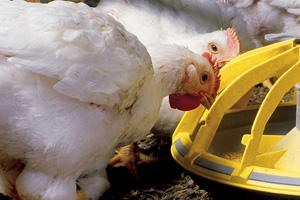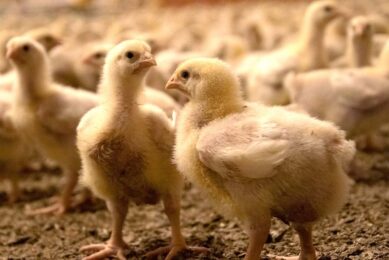Study: Use of enzymes in poultry diets

In a US study on the effects of feed with various combinations of enzyme additives and available phosphorus, 500 male chicks were individually weighed at seven and 14 days. The chicken litter the chicks produced was also analysed for residual phosphorus.
Improving digestibility of poultry rations is important for commercial producers for two reasons, said Dr Jason Lee, poultry scientist with Texas A&M AgriLife Research. The first reason is improved digestibility means improved feed efficiency. Digestibility of soybean meal by poultry is already high, 80 to 85%, according to Lee. “But we want to make that much higher,” he said.
The second reason why improving feed efficiency is important is environmental, Lee said. The nine billion birds produced annually in the US produce large amounts of manure, which is mixed with spilled feed, feathers and bedding material, to make ‘chicken litter’.
Chicken litter is primarily used as fertiliser, but because nitrogen is less concentrated than chemical fertilizers, transportation costs usually limit its use to nearby farms. And the nitrogen in chicken litter can be lost quickly, according to Lee.
Nitrate runoff is usually not a problem with chicken litter fertiliser as it is with manure from other confined animal operations. But phosphorus can be, he said.
“Phosphorus is an essential nutrient required for proper bone development and for efficient poultry production,” Lee said. “The failure to meet a bird’s requirement of phosphorus can lead to many bird-health problems, including reduced bird performance, increased leg disorders and increased bird mortality.”
The main strategy utilised to decrease the levels of phosphorus required in broiler diets is the use of enzymes that utilise the phosphorus in plant sources, such as corn and soybean, according to Lee.
To determine which strains of the two enzymes were best combinations for chicken health and feed conversion efficiency, Lee conducting studies comparing how multiple levels of phytase affects the bio-availability of phytate with and without non-starch polysaccharides. The feed tested was a combination of corn and soybean meal with added vitamins and micronutrients – a standard poultry ration.
The relationship between the effects of the two enzymes turned out to be more complicated than expected. Non-starch polysaccharides increased the bioavailability of phosphorus but at only one of the three levels of phytase concentrations tested.
The results of his study will give commercial poultry producers information they need to fine-tune feed mixture to reduce phosphorus runoff from chicken litter without endangering flock health, Lee said.
Source: Texas A&M AgriLife
Join 31,000+ subscribers
Subscribe to our newsletter to stay updated about all the need-to-know content in the poultry sector, three times a week. Beheer
Beheer








 WP Admin
WP Admin  Bewerk bericht
Bewerk bericht